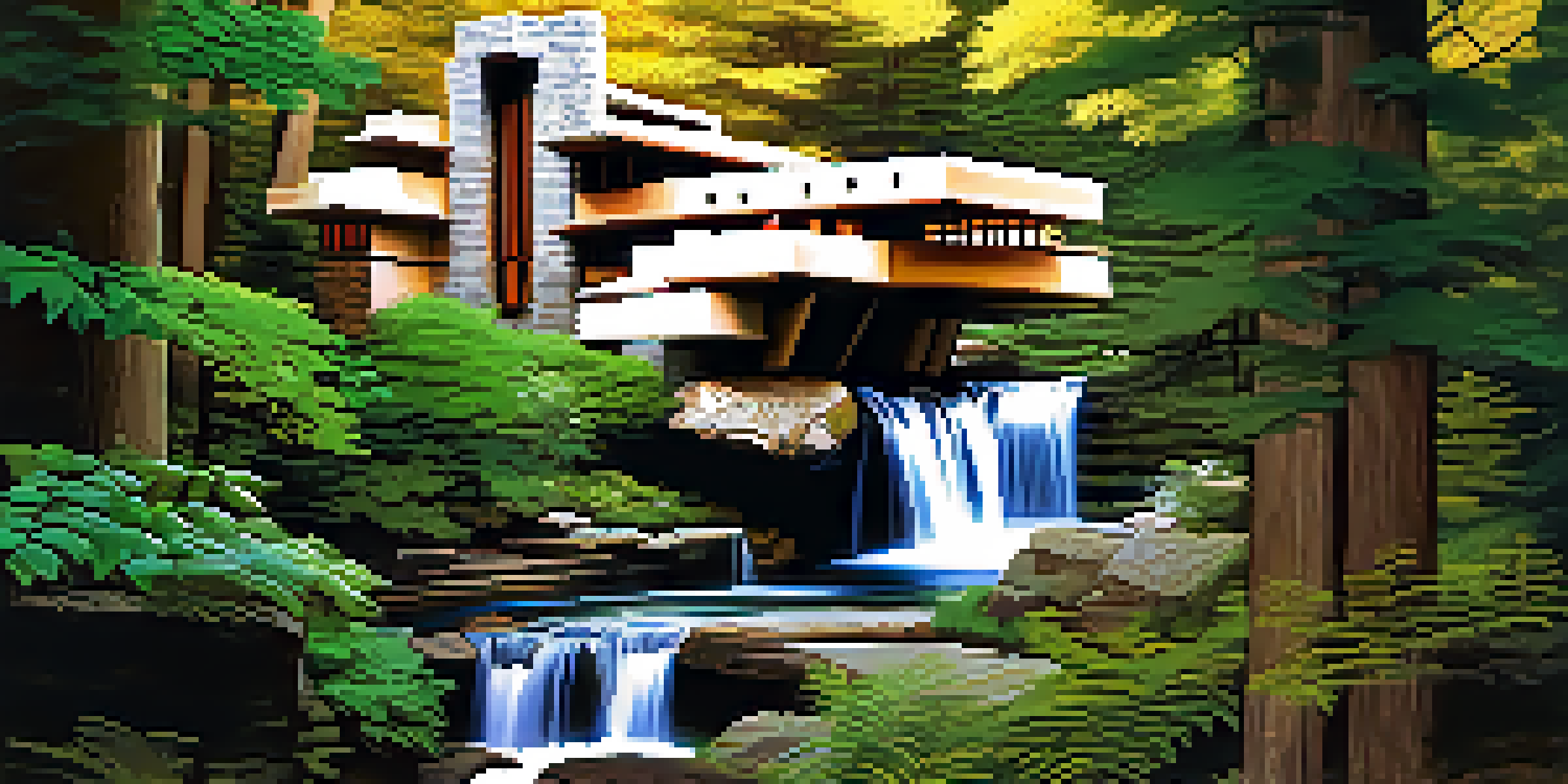Timeless Design Inspirations from Iconic Homes Worldwide

The Elegance of Frank Lloyd Wright's Fallingwater
Fallingwater, designed by Frank Lloyd Wright in 1935, is a masterpiece of organic architecture. Its seamless integration with the surrounding landscape showcases the beauty of nature and design working in harmony.
Architecture is the learned game, correct and magnificent, of forms assembled in the light.
Wright's use of cantilevered terraces draws the eye outward, allowing residents to feel as though they are suspended in the treetops. This approach not only creates breathtaking views but also emphasizes the connection between the home and its environment.
The natural stone materials used in the construction further enhance this relationship, reminding us that timeless design often emerges from respecting and reflecting the world around us.
Minimalist Aesthetics of the Barcelona Pavilion
Mies van der Rohe’s Barcelona Pavilion, built for the 1929 International Exposition, epitomizes minimalist design. Its clean lines and open spaces create an atmosphere of tranquility and sophistication, setting the standard for modern architecture.

The use of luxurious materials like onyx and marble not only highlights craftsmanship but also ensures that every element serves a purpose, embodying the 'less is more' philosophy.
Architecture Merges with Nature
Designs like Fallingwater showcase how architecture can harmoniously integrate with the surrounding environment, creating a seamless connection between home and nature.
This pavilion teaches us that simplicity can evoke profound beauty, making it a timeless inspiration for contemporary design enthusiasts.
Classic Charm of the Monticello Estate
Thomas Jefferson’s Monticello is a prime example of neoclassical architecture, reflecting the ideals of the Enlightenment. The home’s symmetrical design and grand columns convey a sense of order and beauty that resonates through the ages.
Less is more.
Jefferson’s meticulous attention to detail is evident in the innovative layout and the way natural light is used to enhance the living spaces. This thoughtful approach to design reminds us that functionality can coexist with elegance.
Monticello serves as a reminder that classic design principles can inspire us to create homes that are both beautiful and practical.
The Timelessness of the Villa Savoye
Villa Savoye, designed by Le Corbusier, stands as a beacon of modernist architecture. Its pilotis, or stilts, elevate the structure, allowing the landscape to flow beneath while providing a sense of lightness and freedom.
The open floor plan encourages fluid movement between spaces, promoting a lifestyle that values both comfort and functionality. This design approach remains relevant today, as open-concept homes continue to be popular.
Simplicity Evokes Profound Beauty
Structures such as the Barcelona Pavilion demonstrate that minimalist design principles can lead to serene and sophisticated spaces that inspire modern architecture.
Villa Savoye exemplifies how innovative design can transform our living environments, making it a lasting source of inspiration for architects and homeowners alike.
The Rustic Warmth of the Craftsman Bungalow
Craftsman bungalows, popularized in the early 20th century, offer a warm, inviting aesthetic that has stood the test of time. Characterized by their low-slung roofs and extensive use of wood, these homes blend seamlessly into their natural surroundings.
The handcrafted details, such as built-in furniture and exposed beams, reflect a commitment to artistry and craftsmanship. This attention to detail creates a cozy atmosphere that feels both personal and timeless.
Craftsman bungalows remind us that design can be both functional and beautiful, creating spaces that foster connection and comfort.
The Futuristic Vision of the Glass House
Philip Johnson's Glass House represents a daring step into modern architecture, emphasizing transparency and simplicity. The extensive use of glass blurs the boundaries between indoors and outdoors, inviting nature into the home.
This design not only creates stunning views but also challenges our perceptions of privacy and space. Living in such a transparent environment can foster a unique connection with nature and surroundings.
Timeless Design Balances Functionality
From Craftsman bungalows to Cape Cod cottages, architectural styles remind us that beauty and practicality can coexist, creating inviting and functional living spaces.
The Glass House is a testament to how innovative design can push boundaries, inspiring future generations to rethink their own living spaces.
The Enduring Appeal of the Cape Cod Cottage
Cape Cod cottages, with their steep roofs and shingle siding, evoke a sense of nostalgia and charm. These homes were originally designed to withstand the harsh New England winters, showcasing a practical yet inviting aesthetic.
The cozy interiors often feature open fireplaces and simple furnishings, creating a warm and welcoming atmosphere. This design philosophy emphasizes comfort and functionality, making it a favorite for families.

Cape Cod cottages remind us that timeless design can also be deeply rooted in practicality, providing shelter and warmth for generations.
The Artistic Flair of the Casa Batlló
Casa Batlló, designed by Antoni Gaudí, is a stunning example of modernist architecture infused with artistic expression. The organic shapes and vibrant colors create a whimsical atmosphere that captivates visitors and residents alike.
Gaudí's innovative use of materials and forms challenges conventional design, making the home a living work of art. Each detail, from the flowing lines to the mosaic tiles, invites curiosity and admiration.
Casa Batlló serves as a reminder that design can be both functional and fantastical, encouraging us to embrace creativity in our own spaces.